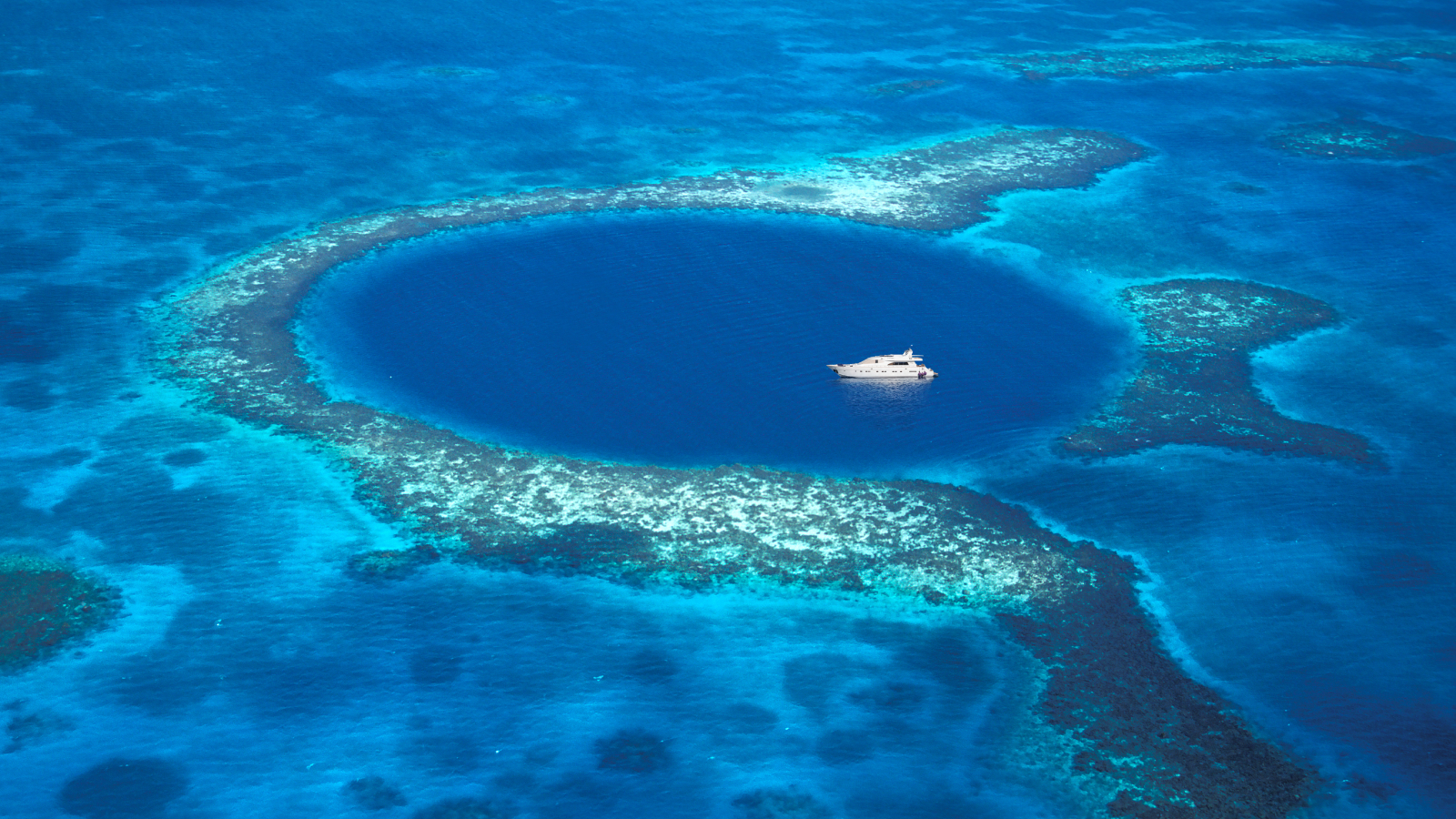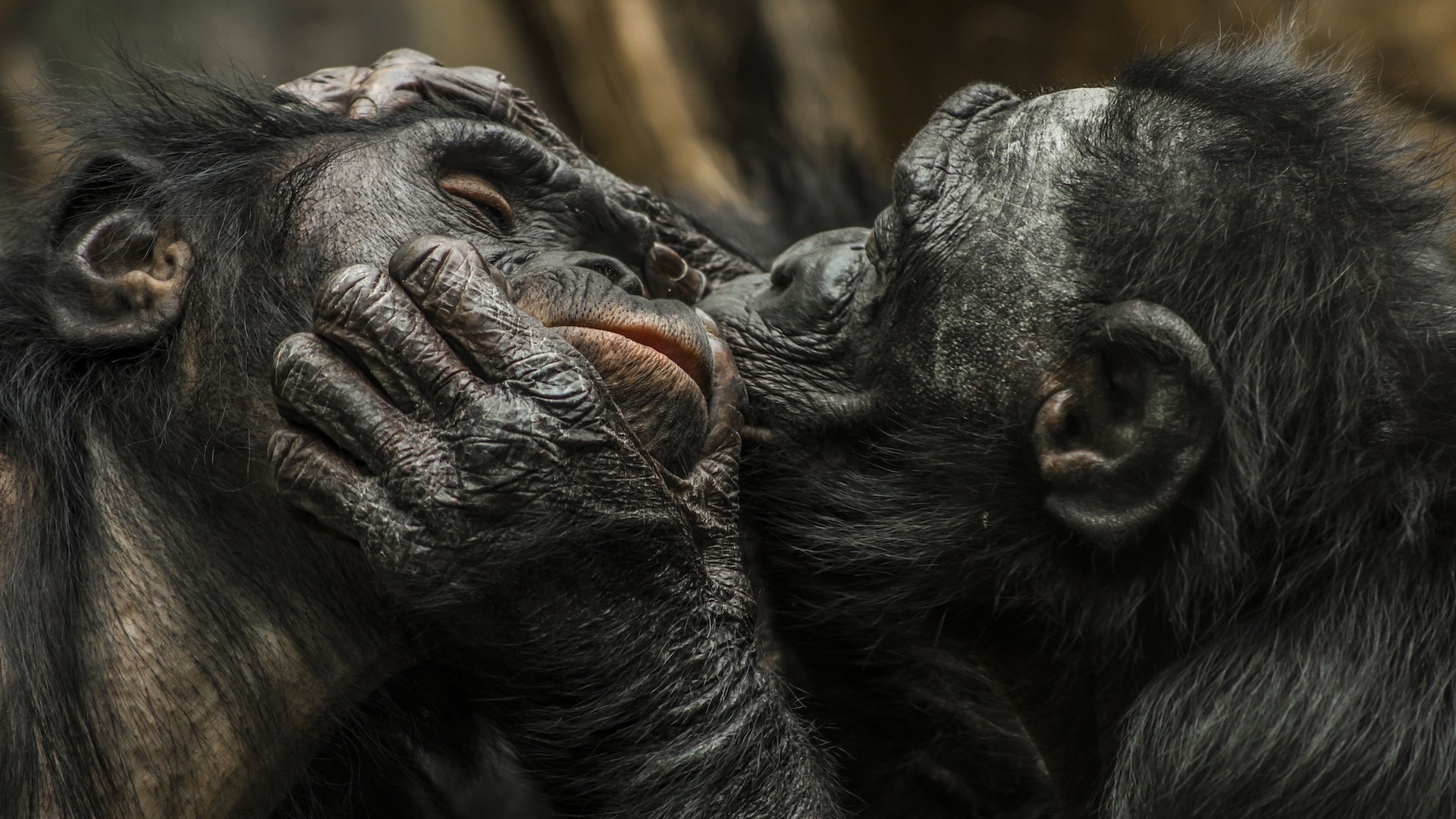The whale-shaped island in Belize with a 'great blue blowhole' — Earth from space
This 2020 astronaut photo shows the unusual cetacean-like shape of Belize's Lighthouse Reef. It's home to the famous Great Blue Hole, which doubles as the island's "blowhole" when viewed from space.

Where is it? Lighthouse Reef, Belize [17.312263000, -87.54462766]
What's in the photo? A whale-shaped island
Who took the photo? An unnamed astronaut on board the International Space Station
When was it taken? March 5, 2020
This amazing astronaut photo shows the bizarre whale-like shape of a Belizean tropical island. The coral-reef-covered structure is home to the Great Blue Hole, one of the deepest marine sinkholes on the planet, which appears to double as the whale's "blowhole" when viewed from space.
The cetacean-shaped landmass, known as Lighthouse Reef, is located around 50 miles (80 kilometers) off Belize's eastern coast in the Caribbean Sea, and is around 26 miles (42 km) long from its "head" to its "tail." It has no permanent human population, but it's visited by more than 10,000 tourists, including many scuba divers, every year.
The island is an atoll, meaning it is mostly underwater and covered by shallow coral reefs, with only a few sandy patches, known as cays, poking above the ocean's surface. The atoll's turquoise waters are only between 6 and 20 feet (2 and 6 meters) deep, but near the island's center lies a dark circle that goes far, far deeper.
The Great Blue Hole is an underwater sinkhole with a near-circular opening that spans 1,043 feet (318 m). It has a maximum depth of 407 feet (124 m) — making it one of the deepest sinkholes on Earth — and it has only recently been properly explored.
Related: See all the best images of Earth from space

Lighthouse Reef is part of the wider Belize Barrier Reef, which is listed as a UNESCO World Heritage Site, and is home to a range of marine life, including a variety of fish, such as wrasses, snappers and gobies, as well as larger animals, such as crocodiles and sea turtles.
One of the island's most notable above-water spots, Half Moon Caye (located on the tip of the hump on the whale's back), is also home to a variety of birds that nest within its coconut trees, as well as endangered species of gecko and anole.
Get the world’s most fascinating discoveries delivered straight to your inbox.
Great Blue Hole
The Great Blue Hole is believed to have initially formed as an above-water cave system, as evidenced by the stalagmites and stalactites found in submerged caves that branch off from the main sinkhole. However, it was flooded around 10,000 years ago as the end of the last ice age caused sea levels to rise.
The hole was made famous in the 1970s when the renowned ocean explorer Jacques Cousteau visited the island and started charting its depths from his famous ship, the Calypso. Cousteau later described the sinkhole as one of his "top five scuba diving sites" in the world.
In 2018, the explorer's grandson Fabien Cousteau and British billionaire Richard Branson led a submarine expedition to explore the Great Blue Hole and created the first 3D map of the structure. One of the standout findings from this expedition was the discovery of a layer of hydrogen sulfide, around 107 feet (33 m) thick, toward the bottom of the hole. This layer is anoxic, meaning it contains no dissolved oxygen, which makes it deadly for most marine animals that venture into it.
The expedition team also discovered the bodies of two scuba divers who had previously gone missing while exploring the Great Blue Hole; their bodies had been perfectly preserved by the hydrogen sulfide layer, according to Newsweek. The expedition team decided to leave the bodies where they were, out of respect. At least one other diver is known to have gone missing in the sinkhole.
More recently, earlier this year, scientists used sediment cores collected from the sinkhole's floor to analyze historic tropical cyclones in the area and found that these storms have become more frequent over the past 6,000 years.

Harry is a U.K.-based senior staff writer at Live Science. He studied marine biology at the University of Exeter before training to become a journalist. He covers a wide range of topics including space exploration, planetary science, space weather, climate change, animal behavior and paleontology. His recent work on the solar maximum won "best space submission" at the 2024 Aerospace Media Awards and was shortlisted in the "top scoop" category at the NCTJ Awards for Excellence in 2023. He also writes Live Science's weekly Earth from space series.
You must confirm your public display name before commenting
Please logout and then login again, you will then be prompted to enter your display name.
